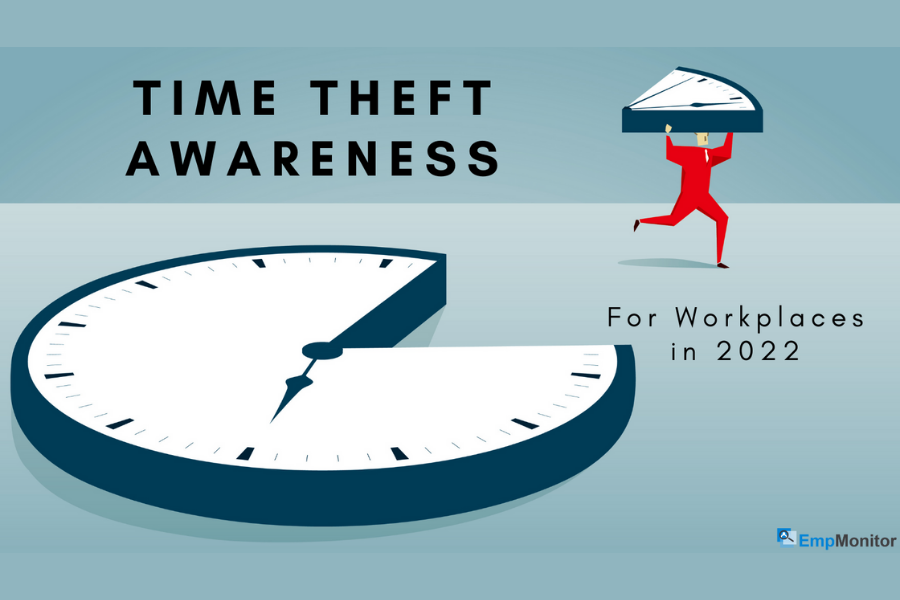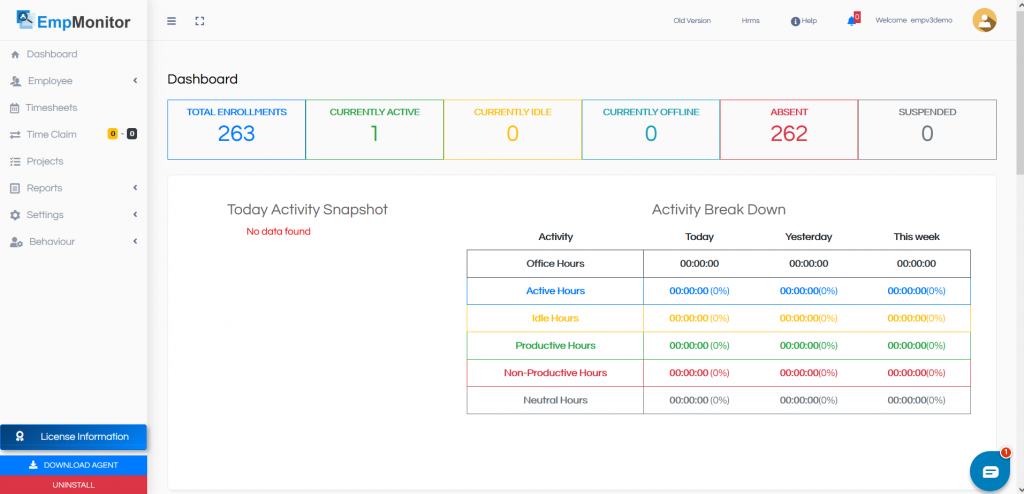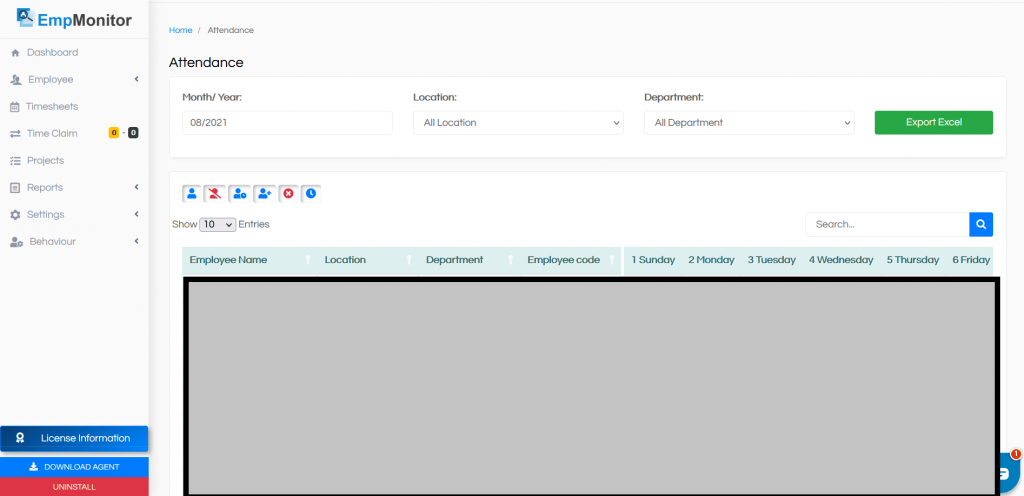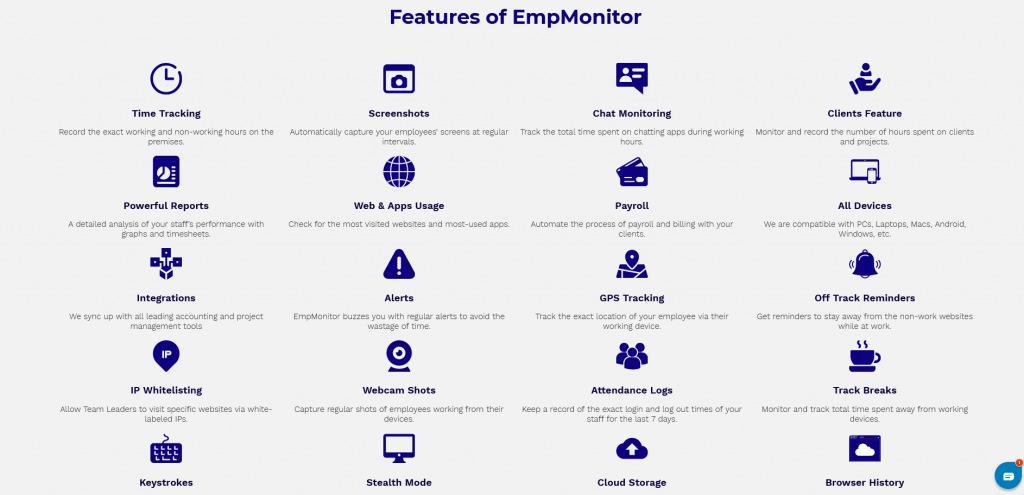We are all aware of the fact that time is money. If you bring time theft into that equation, it is a pretty big problem for organizations, and they should keep it in check for the longevity of their future. Let us look deeper into what time theft is and how it affects our professional work environment.
When you think of theft, you immediately think of robbers who sneak around the house or take tourists away. But for many businesses, time theft is the most reprimandable type of theft. According to a recent Forbes article, the average worker steals about 4.5 hours a week from his employer, nearly six weeks a year, costing companies around the world hundreds of billions of dollars a year.
Simply put, time theft is when an employee spends company time on a job but should not. There are many forms of this, and in this article, we will learn about what time theft is, its different types, and how to avoid time theft in the workplace. Let’s get started!
What is Time Theft?
Time theft is when an employee receives remuneration from his employer for work they are not doing in company time. The company considers it a time theft because workers are not doing the necessary work during work time. Time theft is not always easy to find and can occur in varying forms and severity.
Why does Time Theft occur?
Time theft can occur for various reasons, mainly because it can be tough to detect or prove time theft, depending on how you track your employees’ working hours. In addition, most employees may find time theft relatively harmless.
Minutes here and there, or minutes glued to an employee’s work schedule, don’t seem to be a big deal for most people. And unless it’s a systematic behavior pattern, the small and rare cases of time theft are probably not a big deal for most managers and business owners.
But when time theft at work is commonplace for many employees, that’s another story. Extensive time theft may indicate low employee morale and productivity. For business owners, time theft affects your bottom line.
Types of Time Theft
- Buddy Punching: Buddy punching or ghosting, as several HR personnel has coined it lately, refers to when employees log in attendance for their colleagues running late to work. It puts the organization in a false notion that employees are putting in a full day to work when in reality, they were late to work and cost the organization some time due to their carelessness.
Buddy Punch costs more than $ 370 million annually, according to 2018 estimates. In addition, businesses lose 5% of their annual sales due to employee fraud like buddy punching.
- Entering False Log-In/Log-Out Times:
Going to work early and being late are some of the most common ways employees steal their work. Especially when using an employee’s pen and paper to write down the time of arrival and departure, the numbers can be easily tampered with, even if they are not easily visible. However, even with accurate tracking tools such as time clock software, employees can find a way to spoof them.
For example – in many employee management tools: they round up working hours by 15 minutes if it’s early or late. According to TimeClick.com, time-stealing employees typically add more than 20 minutes to their shifts and beautify nearly 40% of their time marks. By the end of the year, any organization pays their average employee about $ 1,500 that he did not earn.
- The imbalance between personal and professional time: Employees in several organizations are freshers and are not aware of how to manage their professional and personal lives together. Employees can steal company time by completing personal tasks at work. Personal chores tend to be time stealers when they become excessive.
If employees have a side job, they may be running their own business during your company time. It includes answering phone calls and sending emails. Or, in some workplaces, employees can meet customers during working hours. Some employees may be more courageous. They may be taking a nap at work and stealing your time. Employees are working at the right time, but not.
- Taking Breaks For Too Long: Employees can steal time by taking longer breaks than the employee’s break policy allows. Employees may leave early for a while or return to work late. Employees deserve a break. They require by law to take breaks within working hours.
However, there is room for abuse. A particularly costly type of break is a smoke break. The average smoker quits smoking for about six days each year, which is average. In some industries, these breaks can take 20 days or more a year.
- Physical or Virtual Distractions in the Workplace: Internet surfing can be a great distraction, especially for employees who spend most of their work in front of a screen. Employees who steal time this way can waste time browsing social media and other non-work-related websites.
Not only is this distraction expensive, but it also takes productive time due to the cost of switching tasks. Every time an employee changes roles (or switches between work tools and personal websites online), he loses a bit of momentum and concentration. For example, when an employee leaves a page like Twitter, their brain takes a few minutes to concentrate. In a sense, this form of time theft attacks you twice as an employer. One is when employees use the Internet for non-work purposes, and the other is when they need to refocus to get back to work.
These are some of the common ways time theft occurs in the everyday workplace. Time theft is like a disease – that once starts plaguing your workplace will not stop till it gets everyone. One bad fish in the pond will influence the others to commit time theft, and it could be expensive for the organization in the future. Let us see all how employers can avoid time theft in their workplace.
How to avoid Time Theft in the Workplace?
- Be clear about expectations and policies: To prevent time theft, employers should implement guidelines and present them to their employees while onboarding them. It assures that the employees and the employers are on the same page regarding the company’s expectations. It is never safe to assume that employees know how to behave in the workplace.
Instead, it is the employer’s responsibility to articulate breaks, mobile phone usage, and forecasts for work and leave every sunrise. Company manuals should also include disciplinary action that employers can take against employees if they tamper with timesheets, take long breaks, or stay on sites such as Facebook or Twitter during working hours. Finally, make sure all employees review and sign a copy of the manual. In this way, the employer receives evidence of approval if an employee disagrees with the disciplinary action imposed on him.
- Be Communicative and Understanding: It can be incredibly frustrating when you realize that time-theft is occurring in the workplace. The first task for employers and HR personnel is to understand why it is happening.
Time theft, realistically, is often unintentional. It is not always malicious. A few minutes to pay an invoice here. A short personal phone call there. However, if fraudulent time records are common in the company, they may indicate a more troubling problem at work.
So when it comes to taking on-time theft with your team, communicate. Employees and HR must take it as an opportunity to create an understanding relationship between an employee and a company.
In other words, if the theft of time occurs in the workplace, the accusation does not have to be the standard means of communication. It’s about clarifying what you expect and how it works properly. In the long run, this approach to dealing with employee time clock theft is ideal for relationships, morale, and problem-solving. It builds a sense of trust between the employees and the organization.
If the theft of working hours continues or is malicious, it is, of course, time to escalate the response and action. But, until then, communication is the key.
- Set Disciplinary Rules in the Workplace: Employers must set rules and disciplinary actions to take when time theft occurs in the workplace. Time theft should be in check because it costs the organization resources and capital. HR personnel and employers should take disciplinary actions like a verbal warning, written warning, suspension, and ultimately termination.
However, check for violations before blaming the employee. For example, catch an employee taking a selfie when there are no customers around. Instead of issuing or writing down formal verbal warnings, talk to him and remind him of the rules. Make sure you understand the additional tasks you perform when there are no customers around you. There is a big difference between timing two minutes ago and a two-hour lunch break. Be sure to clarify your time theft policy.
- Implement an automated employee tracking management system: The best preventative approach to dealing with time theft is to deploy time tracking software to your company. Automated time tracking software eliminates manual time tracking, buddy punches, and spreadsheets which are the primary causes of time theft. You may also track their productivity through these systems! To learn more about productivity in the workplace, click here!
Replace these with activity-based attendance and attendance and accurate time recordings during working hours to more efficiently record employee working hours and prevent time theft. In addition, time-recording solutions that allow data exchange with employees create a culture of transparency and fairness.
Also Read:
Time Card Fraud Investigation: 10 Tips To Avoid Getting Caught
What Is Business Productivity Monitoring, And How Does It Affect Your Business?
What Is A Hybrid Workplace: 07 Best Practices To Build A Model That Works
EmpMonitor does all that and more!
Once your IT guy installs EmpMonitor in your employees’ systems, it will log in their activity on a minute basis. It means that the employee only must pay for the time, the employee works for the organization, and EmpMonitor keeps a strict eye over that. And the best part about it all, it’s all automated!
Employees check-in when they turn their laptops on for work, and an activity timer pays close attention to their mouse movement and keystrokes, so employees don’t just turn their laptops on and not work.
Let us take a closer look at what else EmpMonitor does for your HR personnel and your organization!
Say Goodbye to Time Theft, thanks to EmpMonitor!
EmpMonitor is one of the most effective working hours monitoring applications for employers and aims to provide complete surveillance of your employees and their workplace behavior.
There are built-in features that allow employers to evaluate and reward talented employees accordingly. EmpMonitor helps you see how your employees spend their working hours during the company hours. It lets you log all employee activity, including the website or application you use, track keystrokes used by users (for more on keystrokes monitoring, click here!), and display them in descriptive graphic or chart format for easy analysis. From the user’s point of view, it is easy to install and very user-friendly. It is a one-stop-shop for all monitoring solutions, tracking, and analyzing employee performance.
Let’s take a look at some of the features of EmpMonitor:
- Automated Time Management System: EmpMonitor tracks time – based on activity and sets a clear separation between inactive and active hours of the employee in a day at work. No time theft if you are not working. It is as simple as that!
- Employee Management System: EmpMonitor keeps a bird-eye view of all your employees at once and has alerts set for when an employee visits a website they are not supposed to be visiting or when an employee has been logging in less active hours. You may click on any employee’s window to check on what they are doing, screenshots of their screens, and their web-app usage on their systems.
- Employee Attendance: View at a glance from EmpMonitor’s dashboard upon who is working and on leave, thanks to the attendance dashboard. Also, check who are your most productive employees and who is slacking off during work so you can reach out to them and address these issues in private.
Not only protecting you against time theft for your organization, but EmpMonitor also provides the following features:
EmpMonitor will take care of the activities carried out by your employees and ensure the complete surveillance of your employees, no matter where they are. Check out EmpMonitor today!
























